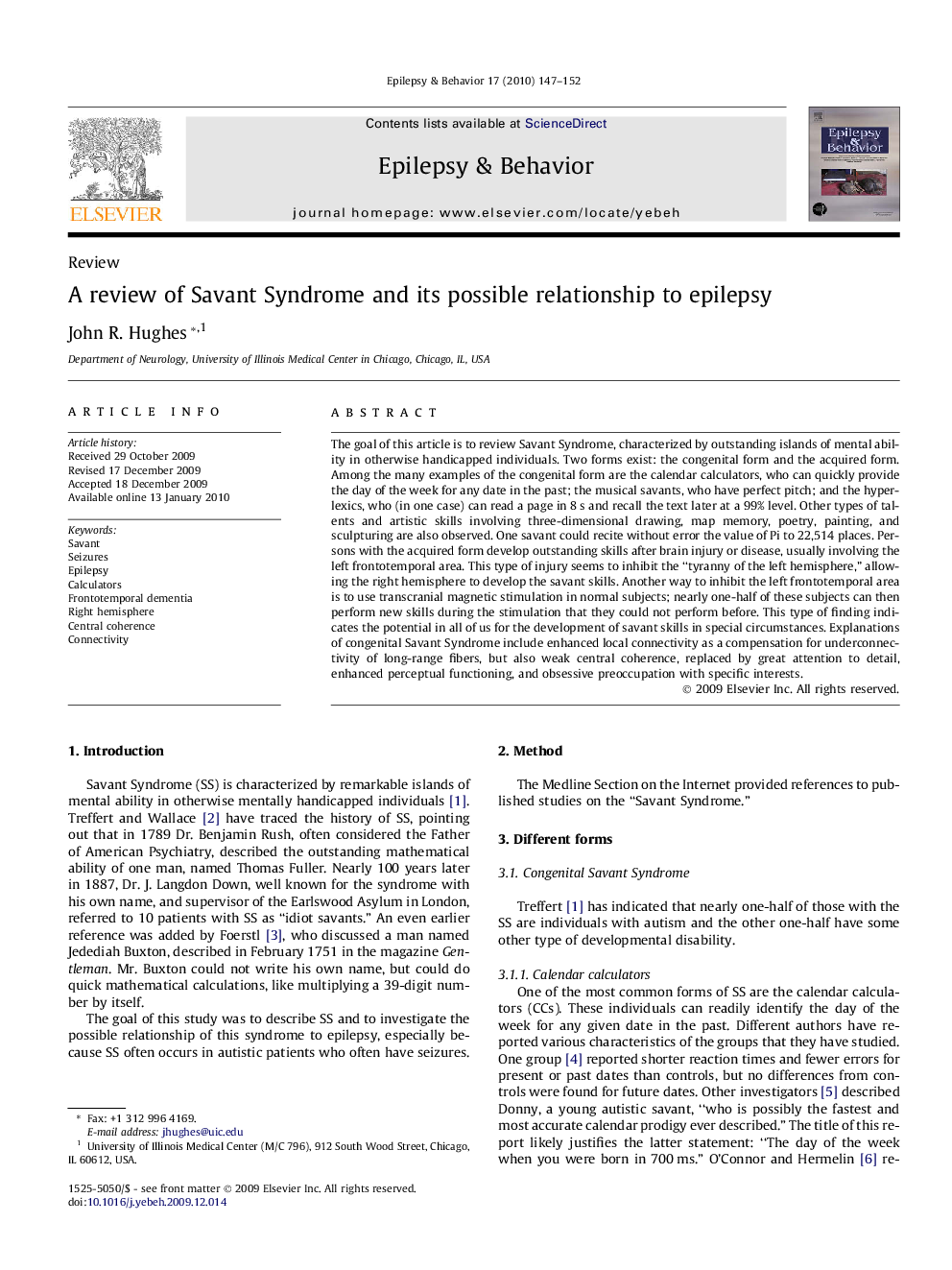| Article ID | Journal | Published Year | Pages | File Type |
|---|---|---|---|---|
| 3050259 | Epilepsy & Behavior | 2010 | 6 Pages |
The goal of this article is to review Savant Syndrome, characterized by outstanding islands of mental ability in otherwise handicapped individuals. Two forms exist: the congenital form and the acquired form. Among the many examples of the congenital form are the calendar calculators, who can quickly provide the day of the week for any date in the past; the musical savants, who have perfect pitch; and the hyperlexics, who (in one case) can read a page in 8 s and recall the text later at a 99% level. Other types of talents and artistic skills involving three-dimensional drawing, map memory, poetry, painting, and sculpturing are also observed. One savant could recite without error the value of Pi to 22,514 places. Persons with the acquired form develop outstanding skills after brain injury or disease, usually involving the left frontotemporal area. This type of injury seems to inhibit the “tyranny of the left hemisphere,” allowing the right hemisphere to develop the savant skills. Another way to inhibit the left frontotemporal area is to use transcranial magnetic stimulation in normal subjects; nearly one-half of these subjects can then perform new skills during the stimulation that they could not perform before. This type of finding indicates the potential in all of us for the development of savant skills in special circumstances. Explanations of congenital Savant Syndrome include enhanced local connectivity as a compensation for underconnectivity of long-range fibers, but also weak central coherence, replaced by great attention to detail, enhanced perceptual functioning, and obsessive preoccupation with specific interests.
